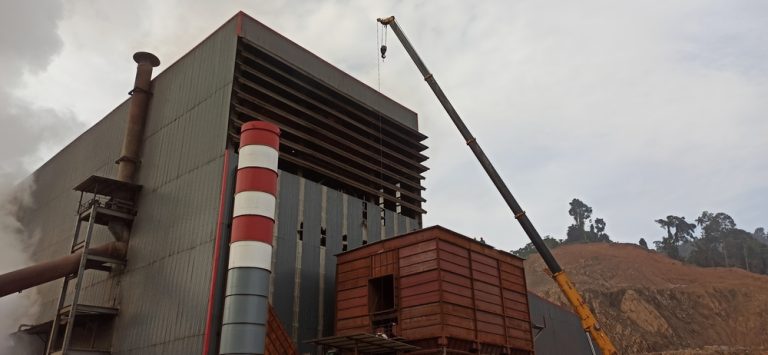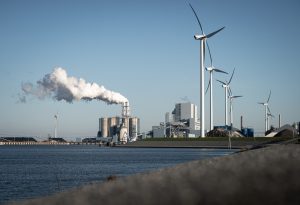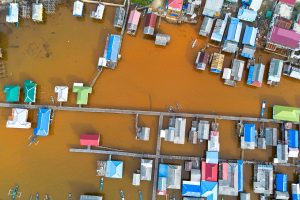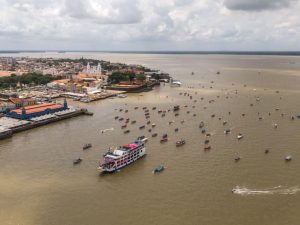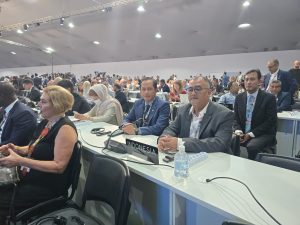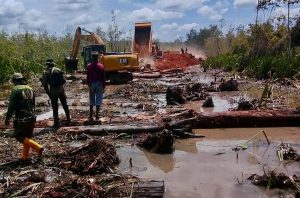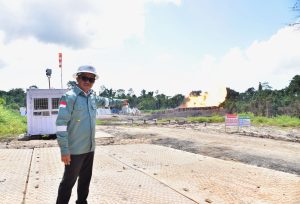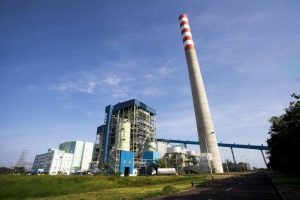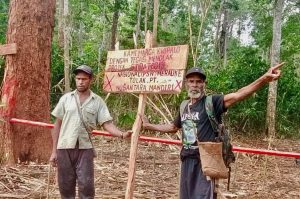Jakarta – Exposure to heavy metals resulting from nickel industry activities in Weda Bay, North Maluku, not only affects factory workers but is also more threatening to local communities. A new report released in late May by the Nexus3 Foundation and Tadulako University (Untad) reveals alarming environmental and public health conditions in Indonesia’s nickel production hub, based on findings from their joint research.
Field research conducted in July 2024 showed the results: 47 per cent of locals tested had blood mercury levels exceeding the safe limit of 9 µg/L, and 32 per cent also exceeded the arsenic threshold of 12 µg/L, out of a total of 46 respondents. Even more shocking, the levels of heavy metals in the blood of residents were higher than those of workers in the nickel industry of PT Indonesia Weda Bay Industrial Park (IWIP).
“This data is a serious warning of the long-term dangers of heavy metal exposure that not only comes from work activities, but has spread through the environment,” said Prof Darmawati Darwis from the Faculty of Mathematics and Natural Sciences Untad.
Contaminated fish, river unfit for drinking
Environmental conditions also show sharp degradation. The water of the Ake Jira River, which has been a source of drinking water and clean water for the community, now exceeds the threshold of class 1 water quality standards based on BOD5 and COD parameters. The colour of the water has turned solid orange with high turbidity, which, according to the study, is only suitable for agricultural activities or freshwater fisheries.
This finding reinforces the complaints of local communities who have long felt they have lost access to clean water.
“We used to be able to drink directly from the river. Now we have to think about washing,” said Elyas Salim, a resident of Gemaf, one of the coastal villages in Weda Bay.
Meanwhile, testing of 16 fish caught by Weda Bay fishermen also showed that all samples contained mercury and arsenic. Mercury concentrations ranged from 0.02 to 0.28 mg/kg, and arsenic from 0.43 to 3.03 mg/kg, exceeding the WHO safe threshold for arsenic of 2 mg/kg. Sorihi fish caught in Gemaf waters were recorded as the most polluted.
“This is strong evidence that pollution has infiltrated the community’s food chain. Regular exposure to polluted fish can trigger chronic diseases such as cancer, neurological disorders, and immune system disorders,” said Yuyun Ismawati, founder and Senior Advisor of Nexus3 Foundation.
2024 data shows a sharp increase compared to 2007
When compared to baseline data from an Environmental Impact Assessment (EIA) study conducted in 2007 by LIPI, arsenic levels in Weda Bay fish have increased by 20 times, while chromium levels have risen 13 times compared to previous highs. This is evidence that the expansion of the nickel industry is having a cumulative impact and worsening over time.
The report calls on the Ministry of Environment and Forestry to review all nickel industry licences in the Weda Bay region. This review should include monitoring emissions, waste management, and ecological impacts.
Furthermore, the Ministry of Health is requested to conduct a study on the prevalence of non-communicable diseases in the region to detect trends in long-term health impacts. The study also promotes transparency in environmental data, allowing the public to access information and encouraging accountability from industry and government.
“The state must stop protecting industrial profits at the expense of people’s health. Heavy metal exposure is not a technical matter, but about the right to a healthy life guaranteed by the constitution,” Yuyun concluded. (Hartatik)
Banner photo: North Morowali, Indonesia. November 26, 2022: Furronickel smelter construction. (Eklesia_Magelo/shutterstock.com)

